Marilyn Manson outside of Catch 22, circa mid-1990s. Photo courtesy of Andy Gfy.
Article originally published by The Grid online (The GridTO.com) on May 24, 2012.
In the early ‘90s, alternative rock was exploding overground, with the rave scene coming up right behind it. This beloved Adelaide Street club bridged these two movements together in a legitimate, licensed space.
BY: DENISE BENSON
Club: Catch 22 Niteclub, 379 Adelaide W.
Years in operation: 1989-1997
History: While a five-year-lifespan tends to be a decent run for nightclubs in this city, some strike a nerve and manage to go it longer, thanks to an ever-evolving community of supporters. Catch 22 was such a venue.
Located on Adelaide near the corner of Spadina, Catch was slightly off the beaten path as it lay on the edges of the then-developing club district and was a few minutes’ walk south from Queen West. It was opened in November of 1989 by a group of friends—with Pat Violo, Lex van Erem, and Gio Cristiano at the core—in a former storage space on the building’s lowest level.
“Lex van Erem had the space and wanted to build a restaurant, but I convinced him it wasn’t a good idea because of its location,” recalls Violo, who had been a manager at RPM nightclub. “I told him it best suited a nightclub. He liked the idea and asked me to be his partner.
“The original idea was to open a club that played only alternative music, and looked very underground. We wanted the music to be the focal point, and it was inspired by CFNY’s format.”
“We wanted to do something that Toronto was missing at that time,” adds Cristiano, a.k.a. DJ Gio. “Klub Domino was gone, Nuts & Bolts was gone, The Silver Crown was gone, so there wasn’t any more really cool alternative places. Thus, Catch 22 was born. We had our own style, and went from punk to techno, from rock to ska.”
Inspired by the open approach of revered alt club Nuts & Bolts, which had closed just the year before, Catch 22 had a similarly industrial feel. Customers entered through a steel door—having first passed by a painted mural of the Silver Surfer and a street-level caged window sometimes occupied by go-go dancers—and walked down into a mid-sized, L-shaped room. The long, concrete bar boasted a mosaic glass counter created by artist and star Catch bartender Suzette Cooper while the club itself was adorned in sheet-metal designs. This was the epitome of 1990s alternative chic, made more comfortable by seating areas, a pool table, and Catch 22’s notoriously friendly staff.
The club’s raised DJ booth and shiny, slippery stainless steel dancefloor—which, contrary to rumour, did not come from Nuts & Bolts—were focal points and its sound was crisp.
“The sound kicked ass and was specially designed for the place,” emphasizes Cristiano. “The lighting was crazy as well. I remember we had this robotic piece right in the middle of the dancefloor that would go up and down, and move side to side. It looked like the planet Saturn.”
Why it was important: A decidedly underground dance club, Catch 22 was both influential and welcoming. A progressive approach to music programming lay at its core and, as a result, the crowds who came out were open-minded.
“Catch was full of people who were into alternative music—not goths, not rockers, but people who lay somewhere in the middle,” says Andy Gfy, an early Catch 22 customer who became one of its key staff, serving as doorman, bartender or Mr. Fixit as required. “The people who came to Catch came to dance. The crowd was no attitude; I never heard anyone making fun or teasing. Catch 22, to me, was a bunch of black sheep herded together.”
Early on, the club’s programming included a punk Wednesday hosted and DJed by CIUT’s Mopa Dean, also the lead singer of the band Armed and Hammered, who frequently performed. The night later gave way to a long-running alt and industrial night DJed by Rono Box and hosted by Andy Gfy.
DJ Gio held down Fridays and Saturdays for some time. A popular and diverse DJ who also came to be known for his nights at The Phoenix and Klub Max, Cristiano had his ear to the ground. He and DJ Hanna epitomized the Catch approach with their Hell’s Kitchen Fridays.
“Musically, we covered a lot of ground, from psychedelic stuff to big beat, techno, jungle, grunge, alternative—anything and everything that was not getting played on the radio except for some stuff being played on 102.1 [a.k.a. CFNY],” says Cristiano.
Full disclosure: I took over Fridays from Cristiano and crew in October of 1993, when I launched and DJed the mixed queer alt night BENT, which ran for almost two years. I appreciate the men of Catch 22 to this day for their support of my programming ideas, which ranged from live bands to cabarets, leather parties to film-fest gatherings, queer community fundraisers and loads more.
But the DJ who is most strongly associated with Catch 22’s early years and success is one Craig Beesack, a gifted club jock who would also become a beloved CFNY host. Beesack started off as the Thursday-night resident, working with infamous promoter Billy X, and was moved to Saturday nights in 1990. Cristiano had caught word that Beesack would soon host the program Warming Up the House on CFNY early Saturday eves—directly before Chris Sheppard’s infamous Club 102 live-to-air—and so the DJ would run from radio station to nightclub. He brought a sizable audience with him.
“That’s when the magic really started,” says Cristiano. “We got so slammed on Saturday nights. Mr. Beesack and his crew really made that place the best alternative the city had seen in a long time. I have so much respect for the guy. Craig played stuff from 1000 Homo DJs to Metallica, Testone to Bodycount, Stereo MCs and Nine Inch Nails. Everything was perfectly formatted and beat-mixed, if you can believe that.”
“Beesack was the man!” agrees Don Berns, who was then CFNY’s Program Director. “Craig was a totally unique DJ who combined industrial and heavier four-on-the-floor techno into a seamless mix that gave his night at Catch a unique flavor, and also made it very different from his weekly alt-rock night at The Cotton Club in Markham. His knowledge of the music, selection, and skills in playing it were the reasons I hired him to create Warming Up The House.
“I’m not a club person and have never enjoyed hanging out—except at Catch,” adds Berns, now an actor who also spins occasionally under his rave name of Dr. Trance. “Something about the underground vibe and the people there resonated with me. Catch 22 was the only club that had the vibe of a couple of underground NYC clubs I’d been to in the ’70s: dark, loud, cool people, cooler music.
“My friend Martin and I got into a pretty regular routine in 1990-91: spend Saturday night at Catch and then go to 23 Hop to continue the party with the Exodus boys. Once the raves got into high gear and we both joined the Nitrous crew, we eventually drifted away from that routine. But for nine months or so, Catch was an integral part of my social life. I would always discover interesting new music when Beesack was on the decks.” (Unfortunately, no one I interviewed for this story had a current contact for Craig Beesack and, as such, he could not be reached for comment.)
There was, in fact, a very pronounced overlap between some early 1990s alternative clubs in Toronto and the roots of what would become our massive rave scene. Catch 22 played an integral role, not only with the music its DJs played, but also by hosting electronic-music events that ran Saturday afterhours through to Sunday night.
Iain McPherson a.k.a. the pioneering DJ Iain who held residencies at clubs like Nuts & Bolts, OZ, and Limelight, and was a founder of the original Nitrous rave crew—initially came to Catch as a Saturday late-night rave DJ. He became the main Saturday club resident for most of 1993, playing a mix of alt, industrial, and new electronic dance music alongside friend and innovative DJ James Kekanovich.
“I think it was only natural that the early edgy production styles of rave music would find a sympathetic ear in the more open-minded audiences of alternative music,” says McPherson. “Despite its up-tempo disco underpinnings, the soundscapes of early rave screamed ‘Pay attention to me! I’m new, adventurous and often aggressive!’ How perfect for alternative crowds.”
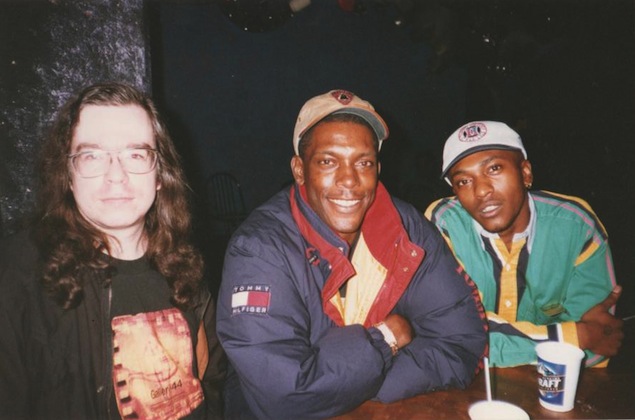
Chris Twomey (left) with UK junglists DJ Kenny Ken and MC Fearless. Photo courtesy of Mary Ireton and Joan Tulloch.
Not only did Catch 22 help introduce club-goers to new forms of electronic dance music—especially breaks, drum ‘n’ bass and techno—it also provided a licensed, stable space for raves when the scene was in its infancy.
Mary Ireton and Joan Tulloch were both familiar faces at Catch. Ireton had worked at Cotton Club with Craig Beesack and followed him downtown to work as a Catch 22 bartender. Tulloch, a fan of industrial music, was a Catch customer from its first week.
They were the force behind a number of Saturday afterhours at Catch “on weekends when there were no raves,” Ireton and Tulloch tell me collectively by email. “There was only a rave every six weeks back then. No club or bar was playing rave music, and they were not willing to give up a weekend night, since they thought there would be no drinkers.”
The two were given Mondays at Catch 22. Majic Mondays were truly that, from the time they opened in September 1993 until the club’s closing in 1997. DJs Mark Oliver and Dr. No were the first to spin, but the line-up was different each week. Diverse local rave and EDM bricklayers like John E, Algorithm, James St. Bass, Tim Patrick, Mystical, Medicine Muffin, Terry Kelly, and Czech played alongside international guests who’d stayed in town after a weekend gig, including Mike Huckaby, Kenny Ken, Ellis Dee, L Double, and John ‘00’ Fleming.
“Majic Mondays was a gathering of music lovers of vast tastes and a wide range of ages,” share Ireton and Tulloch. “There was a community of people—all open to these new styles of electronic music. We were unique in that we didn’t just play one sound and Catch 22 was a unique venue for this music as it actually had a bathroom and running water—much more civilized than the warehouses that were being used for some of the raves!”
Who else played/worked there: Catch 22 was home to a few generations of local alt DJs who would go on to break new music and set the pace wherever they played.
“The DJs that came through Catch were some of the most influential in Toronto’s alternative scene,” agrees Mike Mckinlay a.k.a. DJ Michael X, who played a mix of industrial, goth, new wave, new rock, and Britpop at his X-Isle Thursdays and Rip Rig and Panic Saturdays.
“Craig Beesak, DJ Iain, Rono Box, DJ Jürgen, Die J Mars—all of these guys were changing the music scene and upshot the levels of what was happening in the clubs. Catch was one step for them in their evolutions. The club kept their customers happy by always looking for something new or different.”
DJ Jürgen held down Industrial Strength Thursdays with the late Martin Streek, and then on his own, after Mckinlay’s X-Isle concluded. Mars—a Catch Friday resident after me—moved to New York and developed an impressive career as DJ, producer, remixer, and fashionista. Jeff Caldwell a.k.a. Jeff C was a much-loved Saturday resident later in Catch 22’s history, while many other top alt locals, including Shawn Macdonald, DJ Shannon, DJ Dwight, and Paul Dhingra all made good use of the Catch booth.
“You see, everybody wanted to be a part of that place,” states Gio Cristiano. “We had no problem finding talent. Everybody did it for the music and to give back to the scene. To this day, I really respect everything that everybody did at Catch; everybody was so different, but so, so good.”
“I remember walking in to Catch and finding guys like Marilyn Manson, Trent Reznor, and Pop Will Eat Itself in there,” he adds. “Also, many members of Cirque de Soleil when they did their first show in T.O. They hung out because they loved our bar and staff, especially Suzette. She was the best bartender in the city at that time.”
“Catch 22’s bar and door staff were legendary and wonderful,” adds McPherson. “The place had a lovely, comfortable, community vibe to it.”
Like many I spoke with, McPherson’s former DJ partner James Kekanovich makes special mention of Catch 22’s venerable doorman Paul a.k.a. Rave Master.
“Paul was the first touch point when entering the club, and his understanding of the scene being created there was an essential component to the experience. He was a familiar face and really knew the crowd.”
Staff would have to contend with only one big recurring problem.
“The dancefloor would go out of control when Ministry came on,” recalls Andy Gfy. “People just flew everywhere. Pat used to freak out about all the broken glass; the floor was covered in it. Eventually, it was decided that we couldn’t play Ministry or Rage Against the Machine between 12:30 and 1 a.m. [then last call in bars].”
What happened to it: In 1997, Catch 22’s owners found that the building’s landlord would not renew the lease. The club closed with a bash on May 31. 379 Adelaide West was soon renovated into the office building that exists today.
Pat Violo, in association with Liberty Group, opened infamous live-music bar and alternative dance club Velvet Underground at 510 Queen St. W. Many Catch 22 alumni can be found there, including Andy Gfy on bar and Paul a.k.a. Rave Master at the door.
There was a Catch 22 reunion party held last year, with DJs Mars, Jürgen and Jeff C, with talk of future events. A related Facebook group keeps the Catch community connected.
Thank-you to all those interviewed, as well as to Christy Washer and Tim Barraball for their contributions.

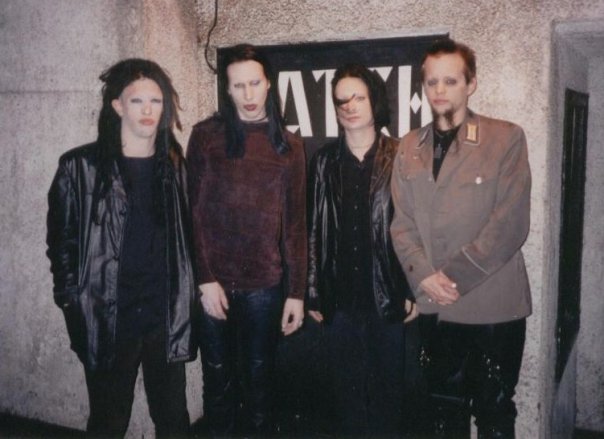
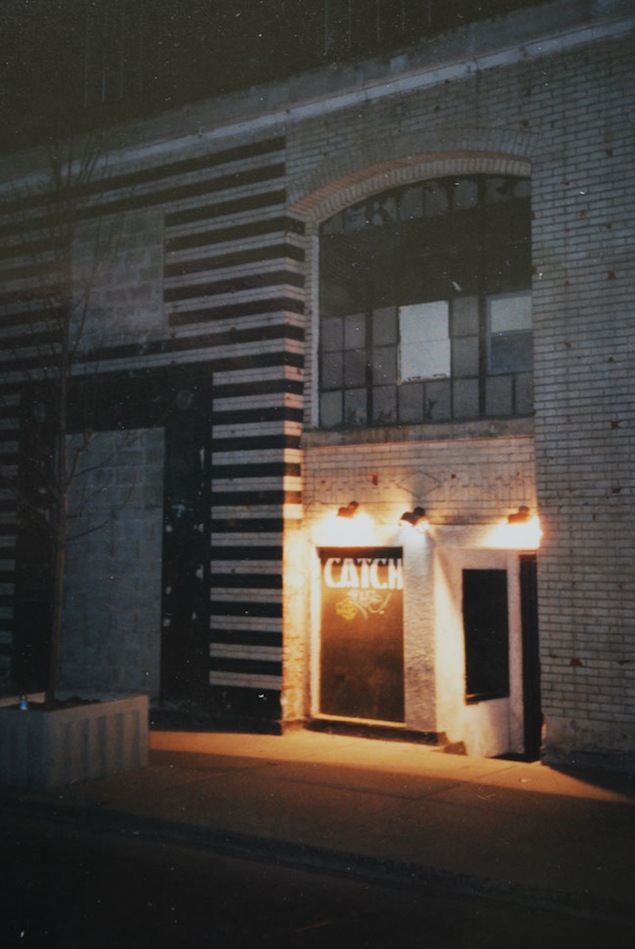
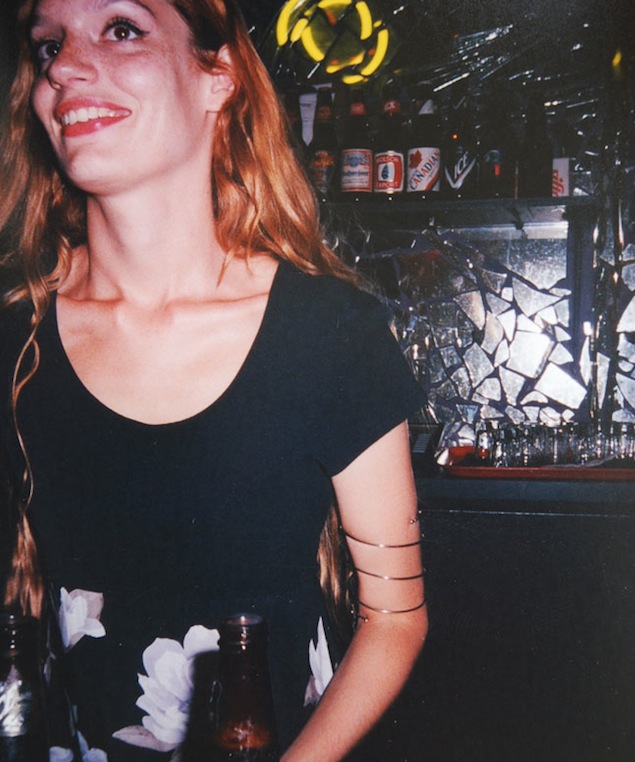
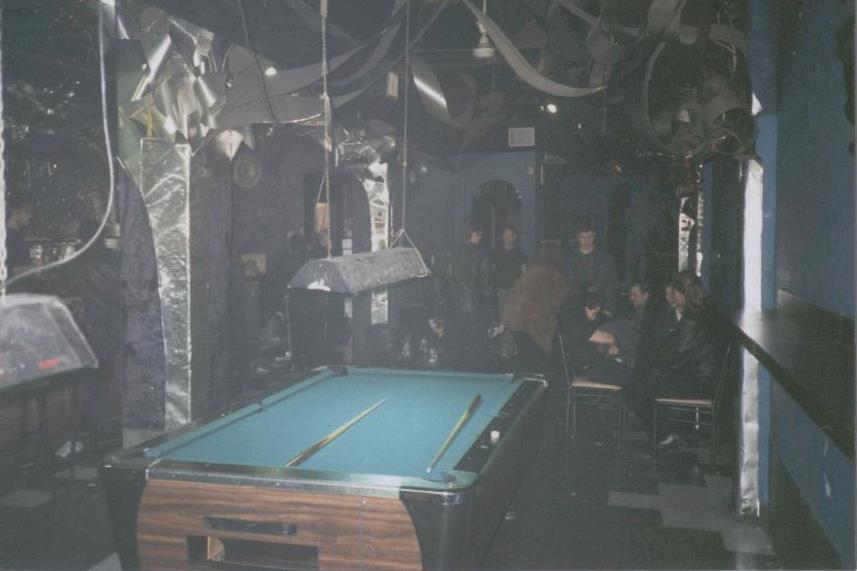
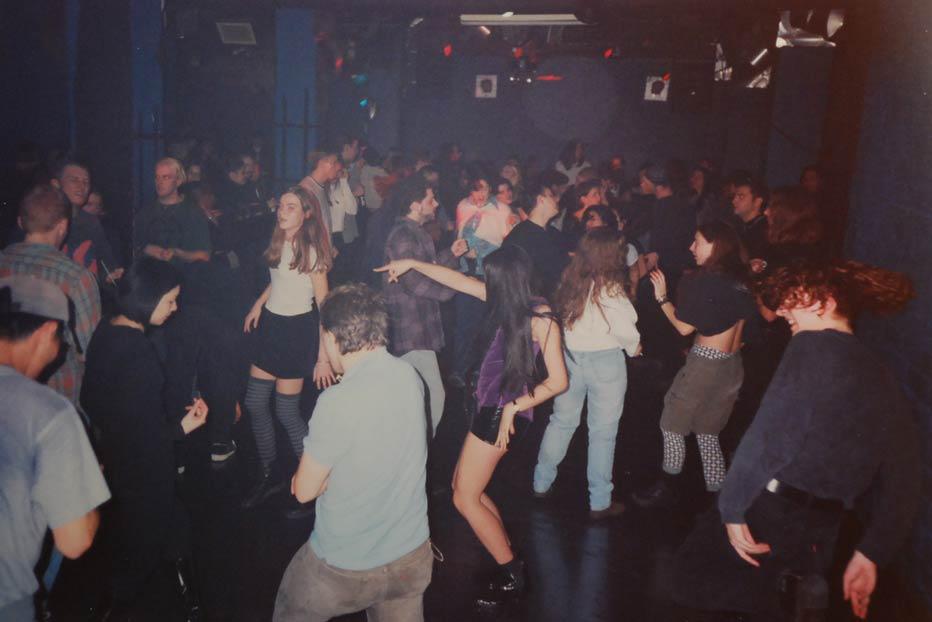
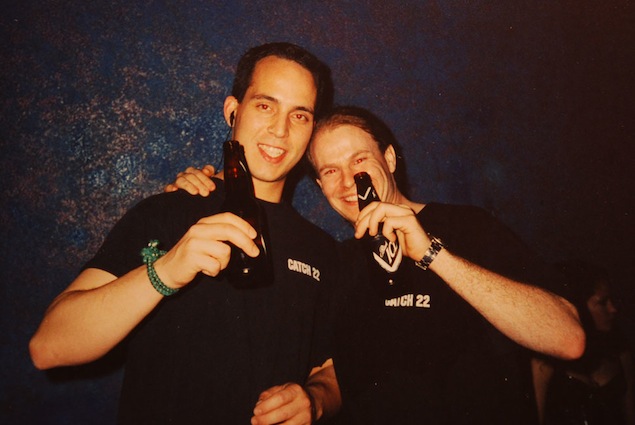
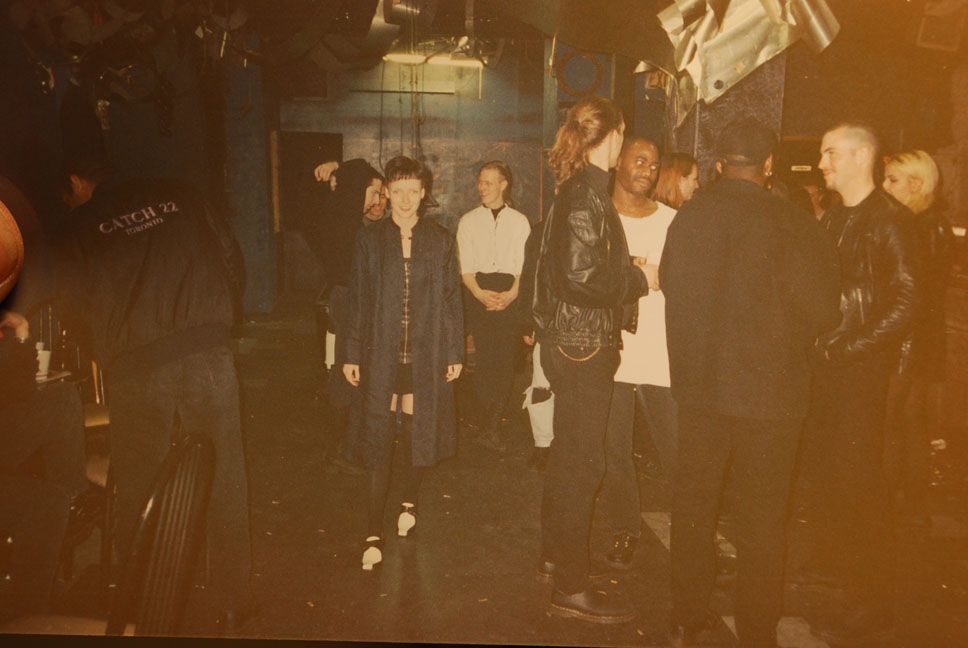
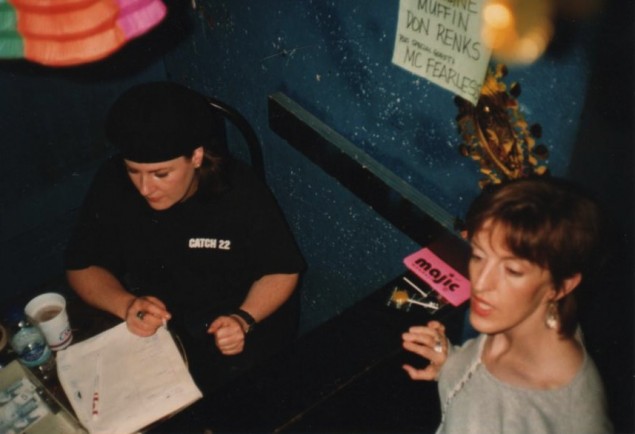
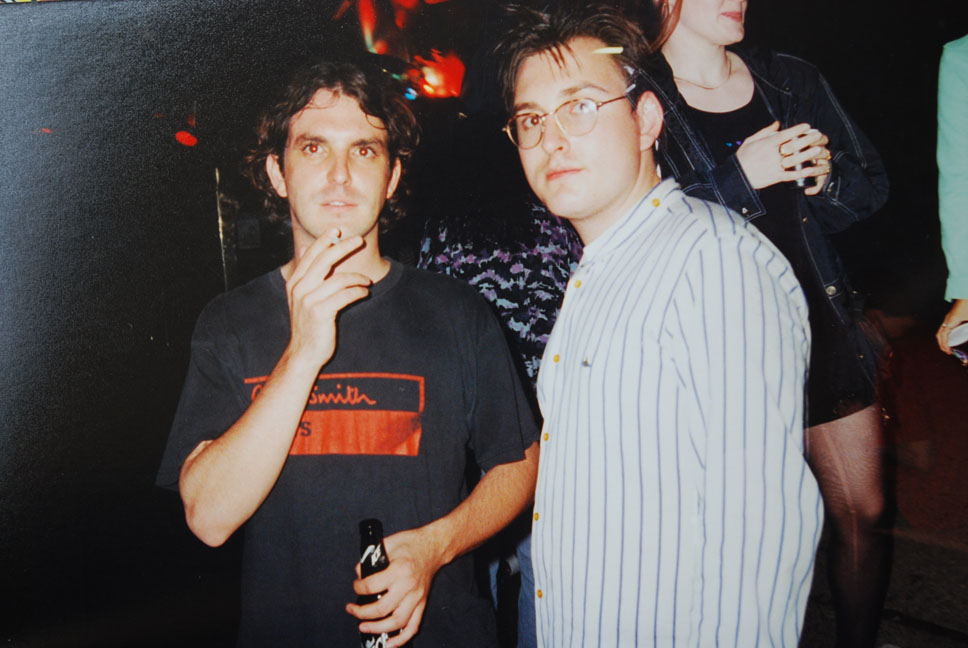
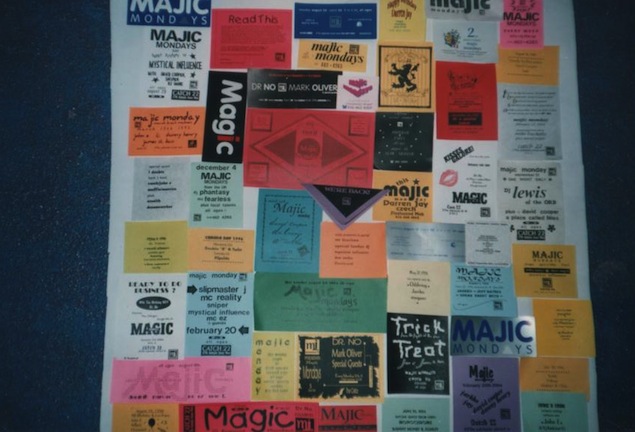
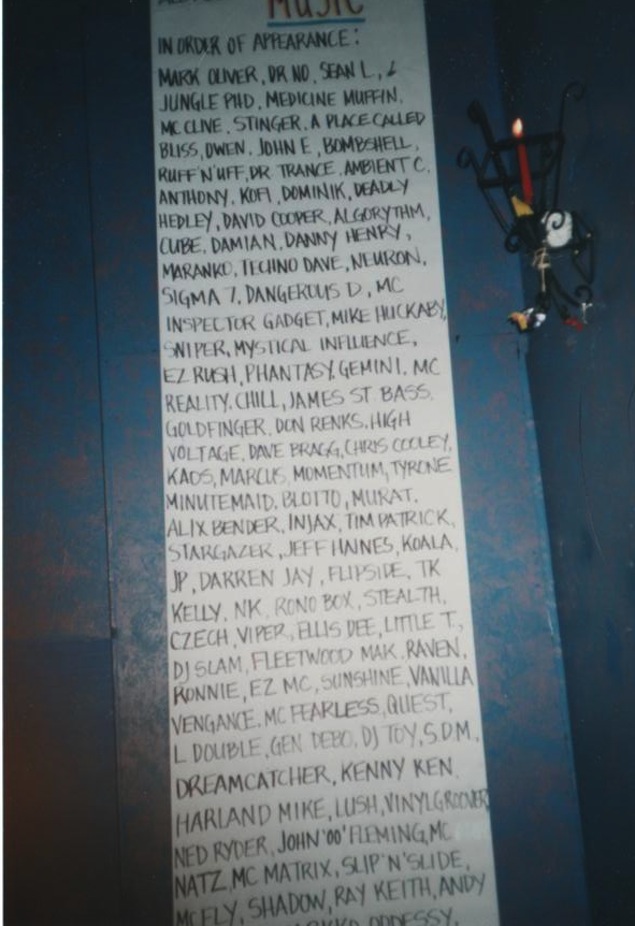
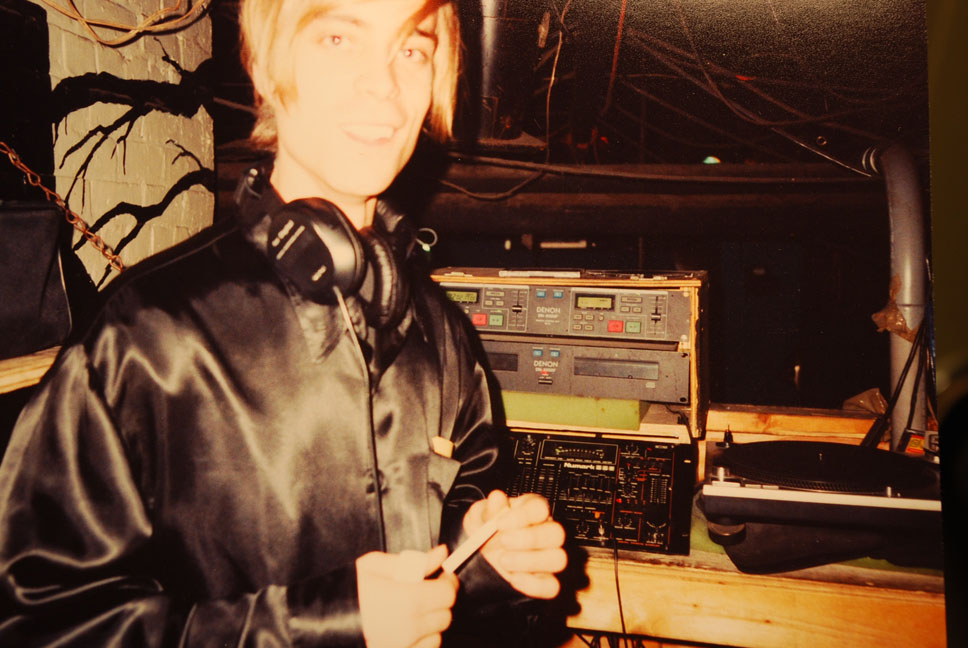
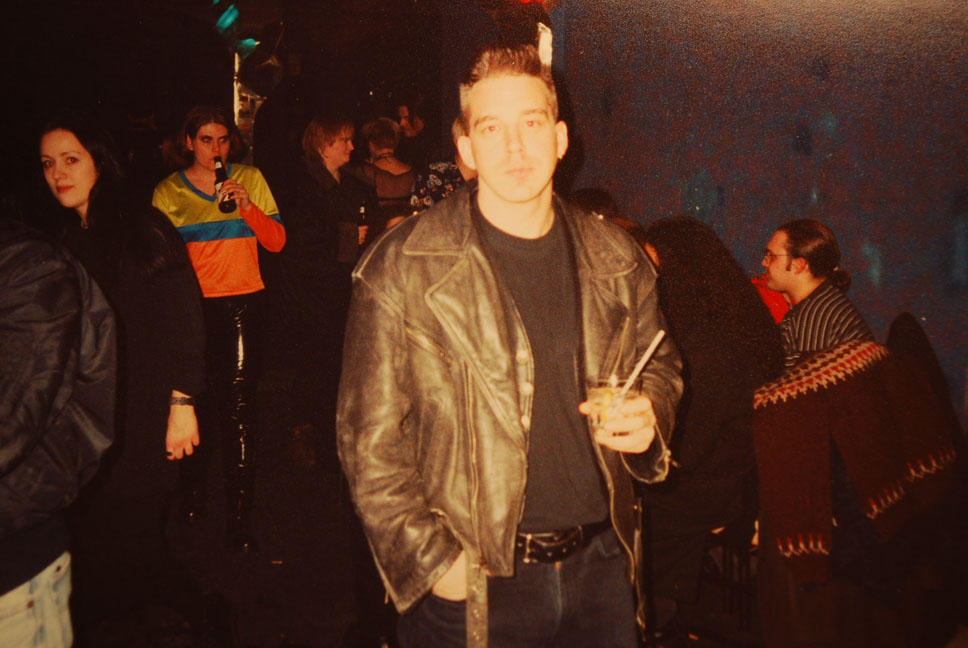
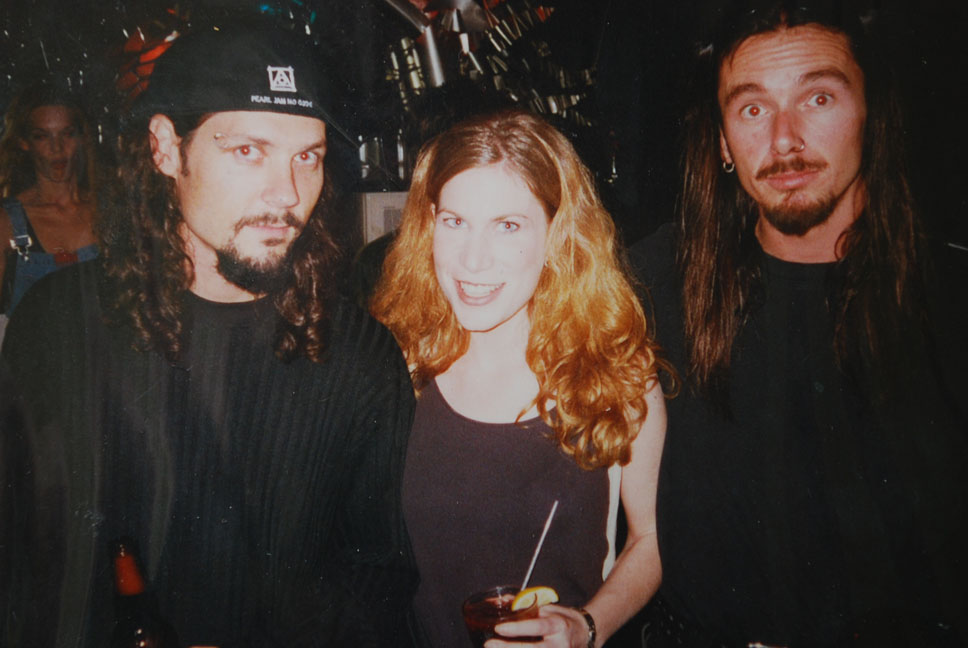
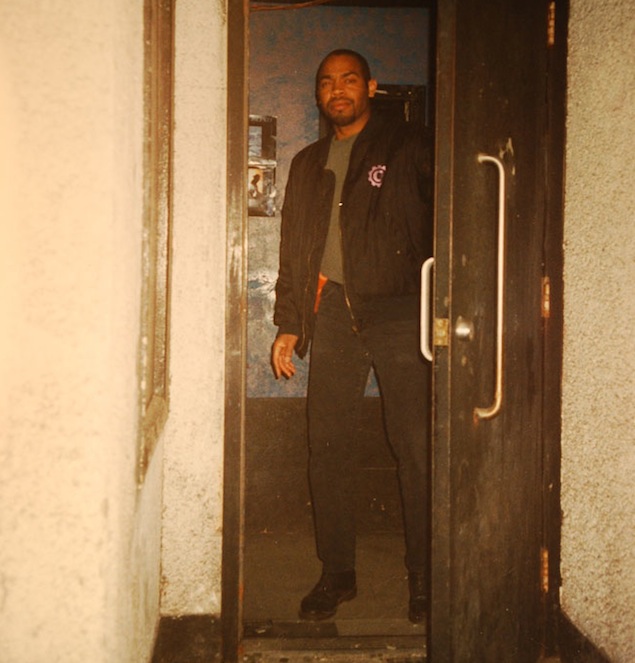
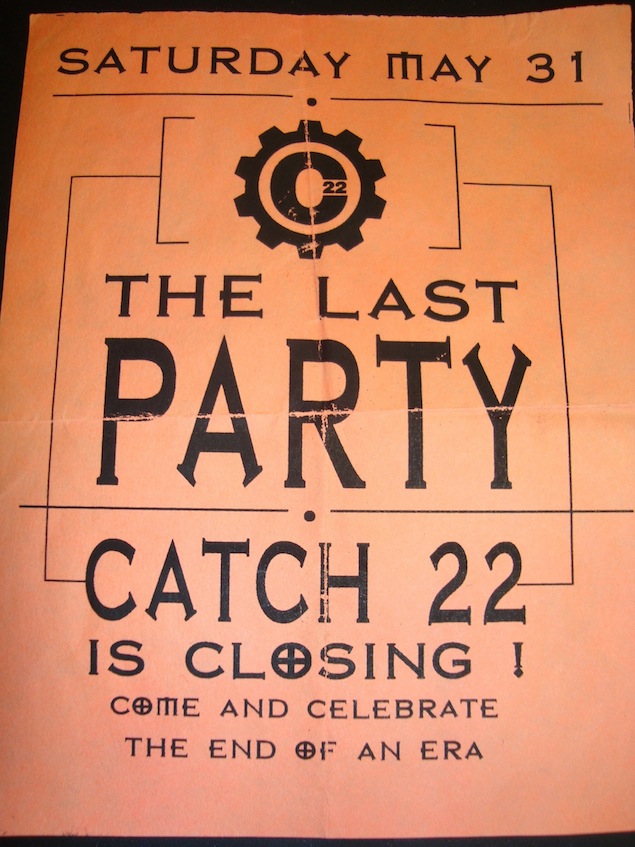
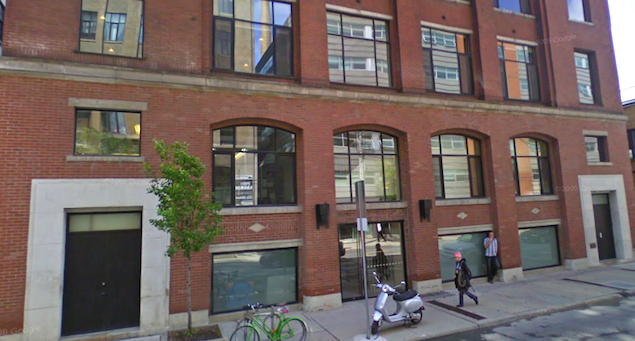
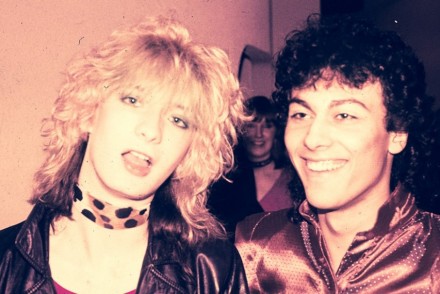
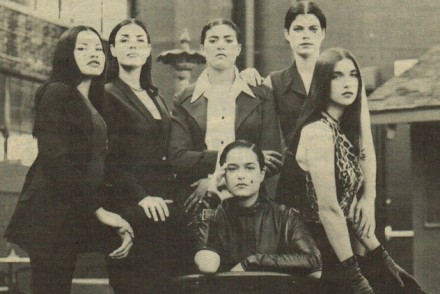
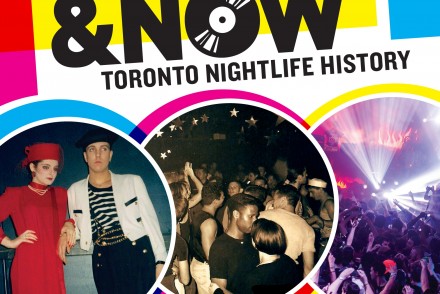

3 Comments
We love yaz!!
DJ Mad Max was legendary working with Gio on alternatenuit Fridays he also had a Tuesday he was one of the originals love him!!!
All comments in the string below have been republished from their original appearance on The Grid website. We’re including the readers’ comments as they add to these Then & Now stories. We look forward to reading new comments here as well.
tim cathcart
Came across this after watching a 1st season episode of La Femme Nikita (and searching Queen St sets used in the episode…somehow led to this, abstruse, I know…). Amazing how it can all come rushing back in after all these years, those nights experiencing the influence of Mars and Jurgen and Jeff C and simply the quality of that scene…never to be replicated. Thanks, Denise.  1:36 am on July 28, 2012
Eric Alper
Absolutely one of the best stories I’ve read in Eye/The Grid, or anywhere else. Denise has created a document of thousands of people’s lives, and thank you for doing that. 11:00 am on June 1, 2012
Die J!
Mars I agree 100% with Michael X. Awesome article. You got it down. Makes me realize how much I really miss that place. Out of all the clubs I’ve ever done, it really was home. Funny enough, I remember sneaking in with my friend and my fake I.D. when I was underage. It was a blizzard and the bouncer told me the party was cool. After I paid to get in there was nobody there. Then many years later, Michael X told me to go spin there cuz I needed a job (just got fired from Death or something…)–that an a combination of meeting Jason Levesque (the club’s later promoter). From what I heard, I was told it was a “gino bar”. Hahaha.. Then I met Pat the owner who said some homophobic thing to me and would constantly come into my booth (even on packed nights) and say “what is this shit, you suck!” It really pissed me off but put me in place and brought my stupid ego down. He also actually was a bigger fan of the “alternative” music than most of us. He stumped me a few times and always talked about going to Cure concert.. Years later he was one of my best friends and I go play soccer with him wearing my nail polish. Hahaha. After seeing the movie “Lords of the Dogtown”, Pat really was like that partying older brother who made everyone feel at home. Oh yeah, the first time I met Gio (another great guy), Pat told me he was a Go Go Dancer. I didn’t even know he was the owner…  You know, I knew the place was magical but didn’t know the full extent of it (since 89!) until I read your article. You were so right about the music. I blew hundreds of dollars a week like a crackhead going to the secret bins of Play De Record, etc. to find new tracks to break in. Looking back, like all of us, I was spending $15 on a single to try to be the first one to play it and hope I wouldn’t clear the club out for the 5 minutes I tried the track out. I valued this over food–literally! That sorta craziness is gone now with MP3s. In fact, I switched my name to “Die J!” only because I wanted to separate what I did at Catch where I pushed new music from other nights I did where I would play “the classics”. Unfortunately, when Catch closed, I was doomed with that Die J! thing forever as that was my name for the other night I did. Haahaha! I think half of us waiting for the next 4 years in denial that a new Catch 22 was going to re-open. I didn’t even want to do any other gigs until this new club happened… BTW, what ever happened to Paul the bartender? I know Suzette got married and lives in Denver. I also heard Coz the door guy (you can’t forget him–the nicest guy around but had surprisingly the strength of Thor to stop a situation) became an accountant. I also was in NYC for 10 years but got married and move to L.A. about a year and a half ago. I just made my first feature film http://freakchic.com/2012/05/08/the-house-of-field-documentary-by-mars-roberge.aspx that I’m trying to get into this year’s Festival of Festivals. If it makes the cut, I’m hoping to do some sorta Catch thing the first or second week of September. Fingers crossed. 8:46 pm on May 25, 2012
Alec
Really enjoying this series. Hope at some point you’ll do a piece on the heyday of the DanceCave, circa 89-94. Highly un-fancy and barely crosses that line between beer hall and nightclub, but we had a lively, diverse scene and great DJs, including Siobhan O’Flynn, Stephen Scott, Mr. Pete and a host of others. 12:36 pm on May 25, 2012
DJ Michael X
You’ve done it again Denise. I truly think you put all of the pieces together for this part of Torontos’ Alternative/Electronic musical puzzle. Thank you again for allowing me to contribute. DJ Michael X 11:42 pm on May 24, 2012
DAVID JAMES
This series is touching my heart. The venues you are writing about bring back amazing memories for me. All the places you have covered truly have influenced my life and my decision to enter the music world. Thank you. When I read this I really feel like i’m back in the day. Would you consider gathering these stories in to a book? 11:11 pm on May 25, 2012
DJ Michael X
Tim, Just wanted to say thanks for posting the video clip! 2:50 am on May 26, 2012
Denise Benson
Thanks for the feedback & for participating, Michael. David, happy to hear you’re enjoying the ‘Then & Now’ series. Thanks! And yes, the goal is to publish a related book. Many more stories to tell  4:11 pm on May 26, 2012
Die J!
Mars Denise, I’d buy that book! All this nostalgia has me thinking how cool it would be if all these clubs had reunions the same weekend in their original locations (if possible, e.g dancing next to the burger stand in the Boom Boom Room) so we could go club-hopping like it was the early nineties all over again. Might seem like when the Earth stood still in the original Planet of the Apes… 4:57 pm on May 26, 2012